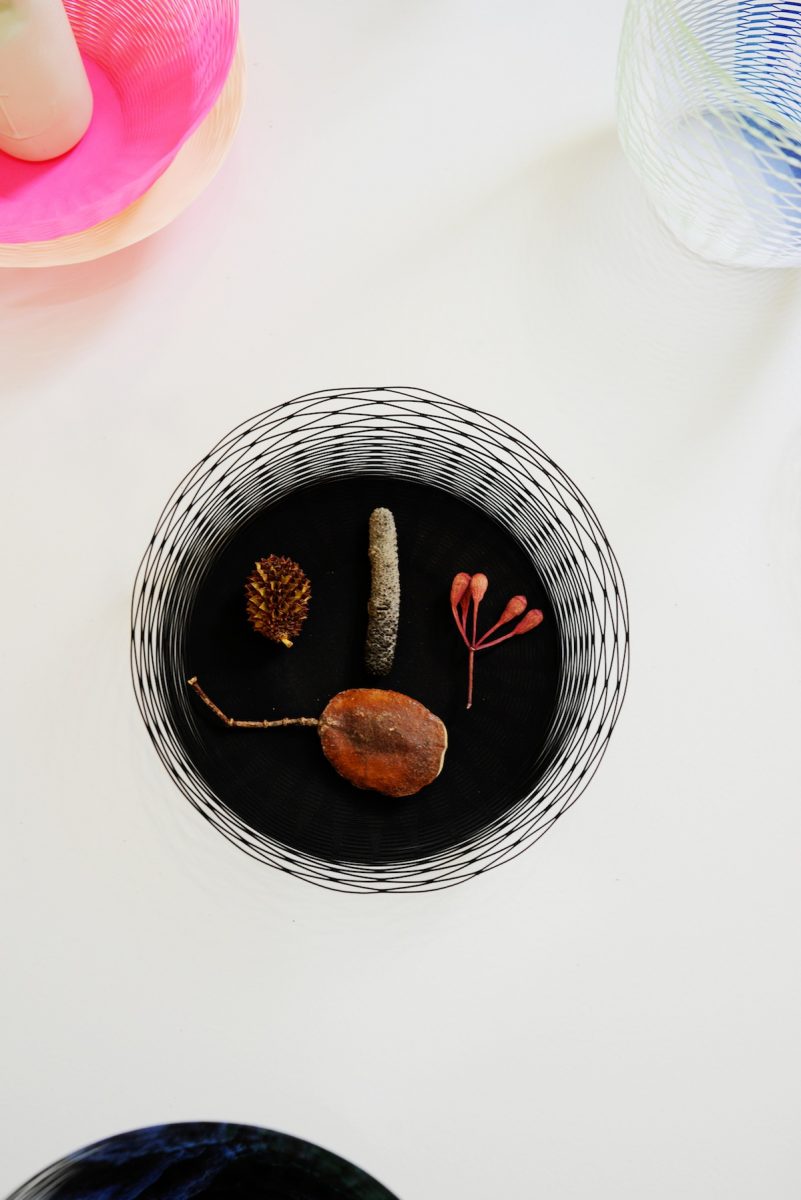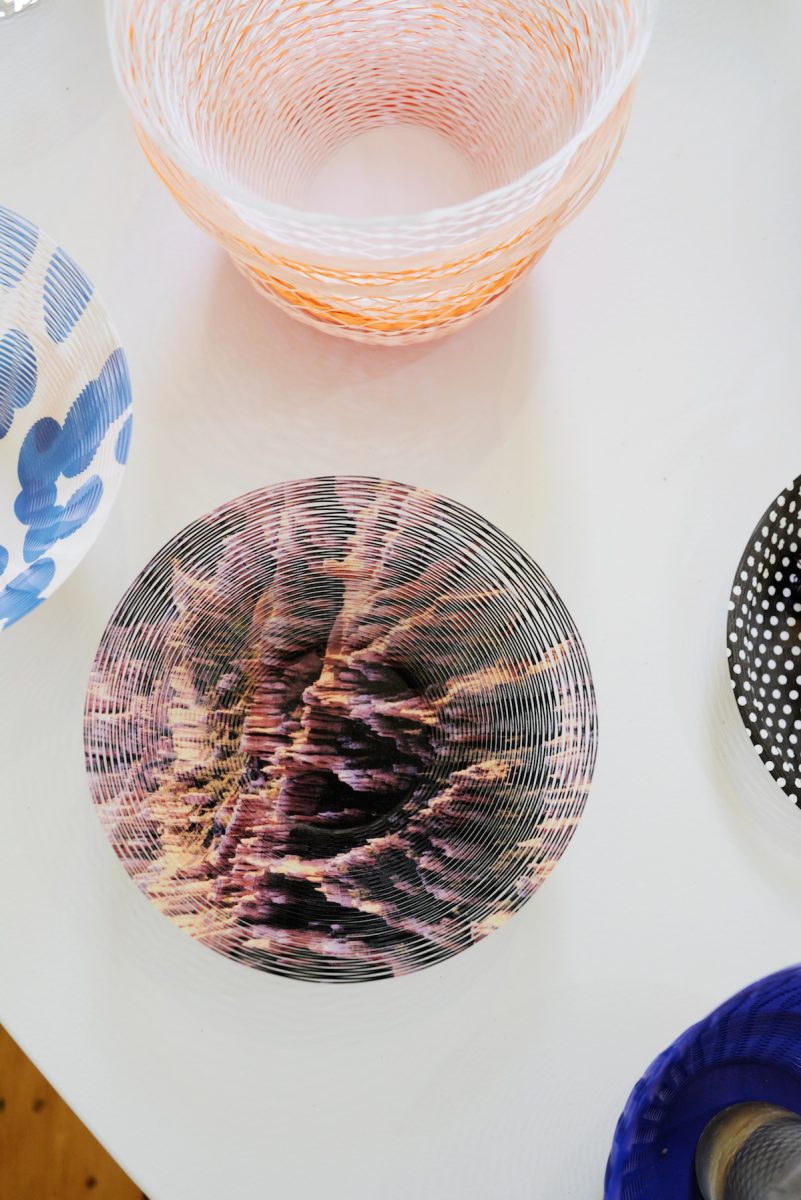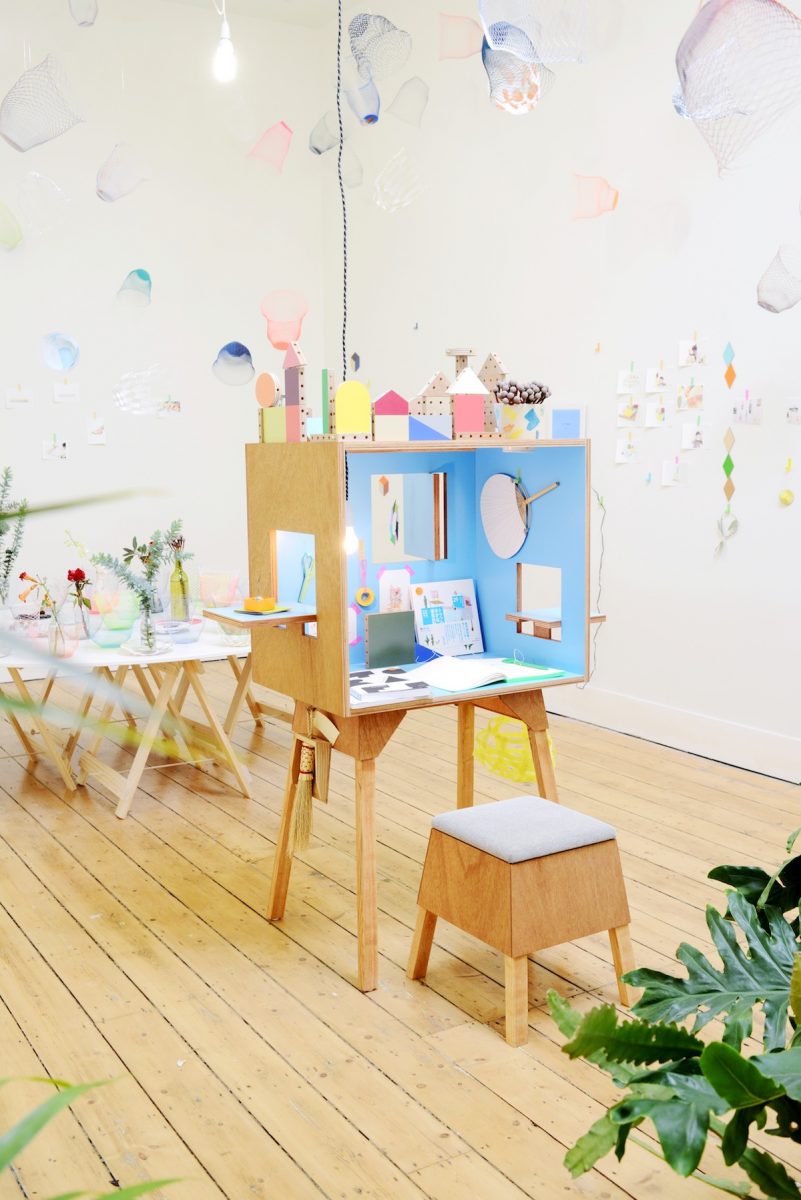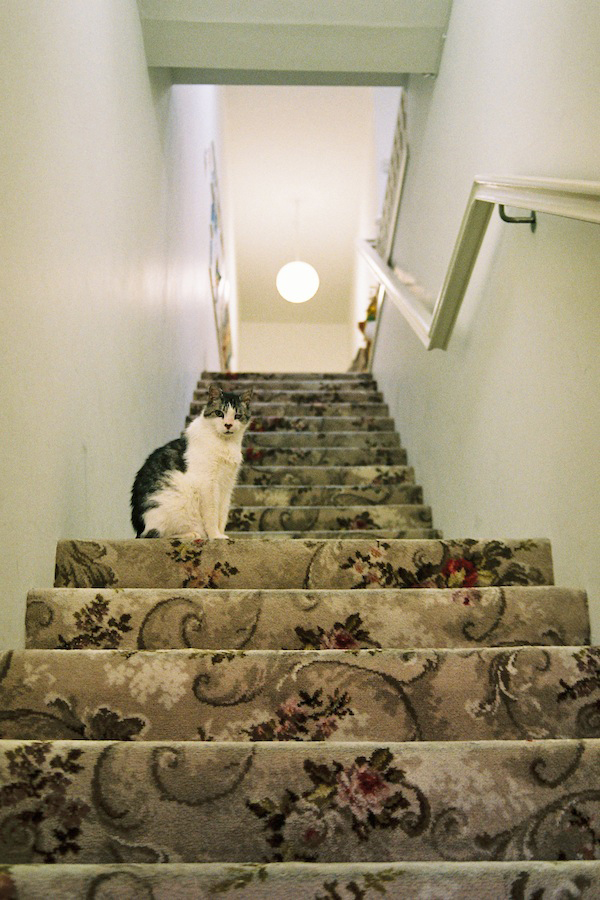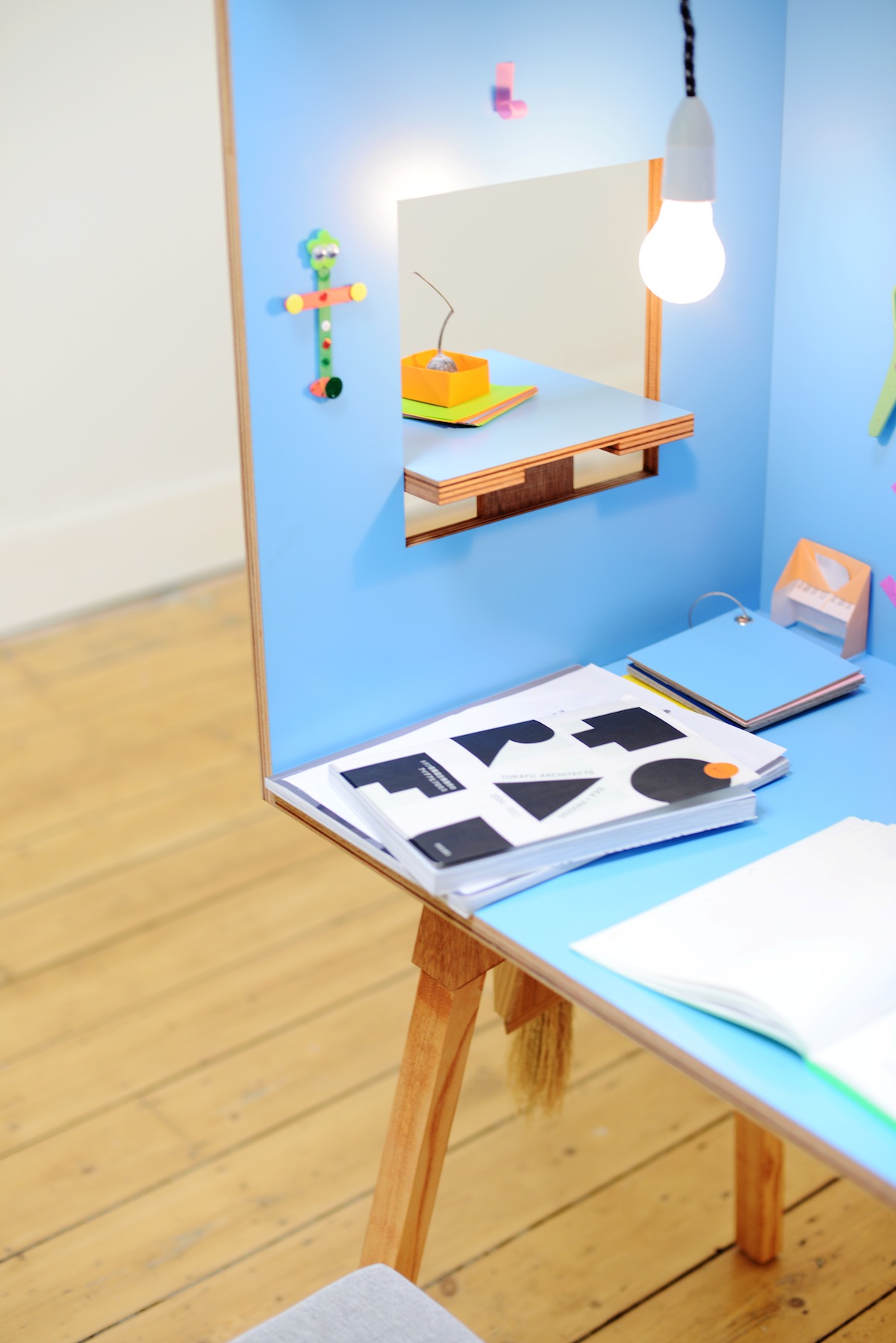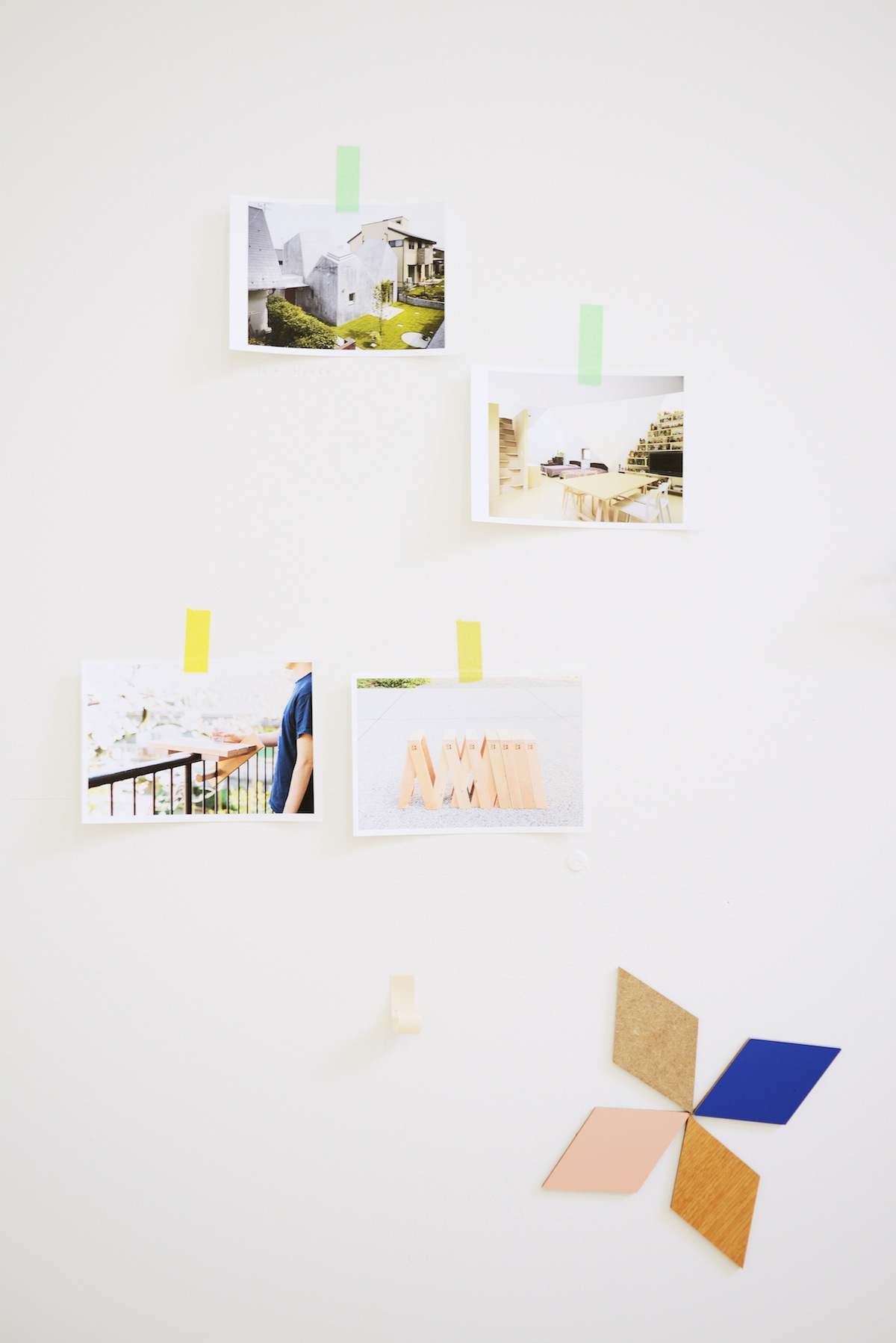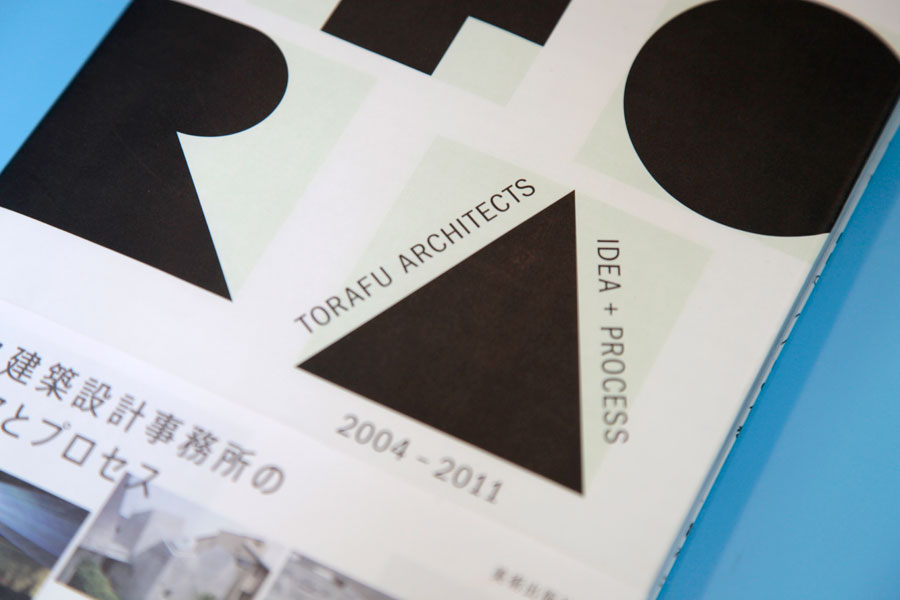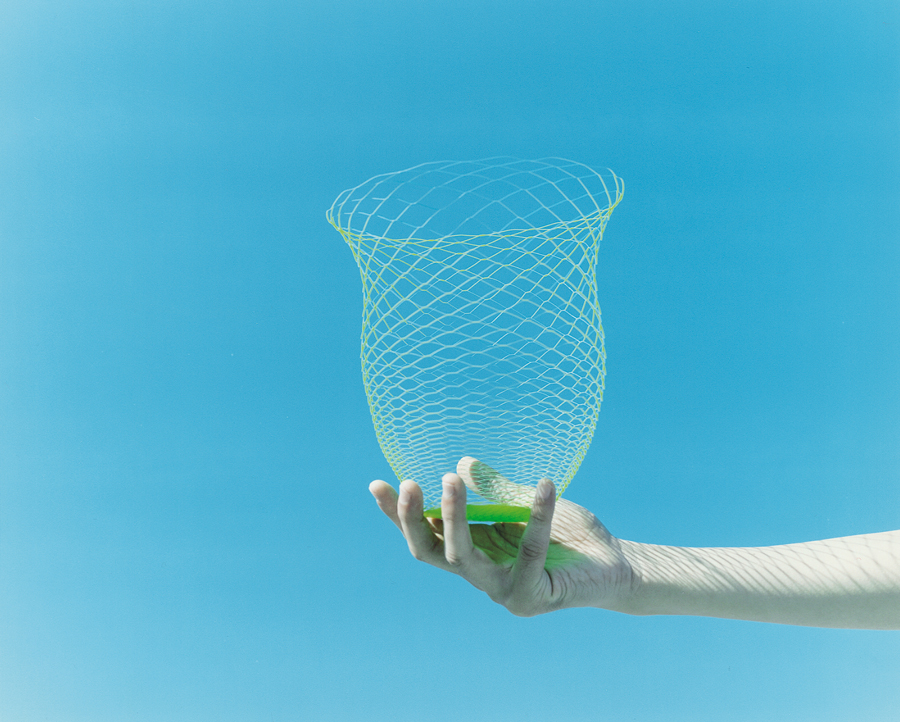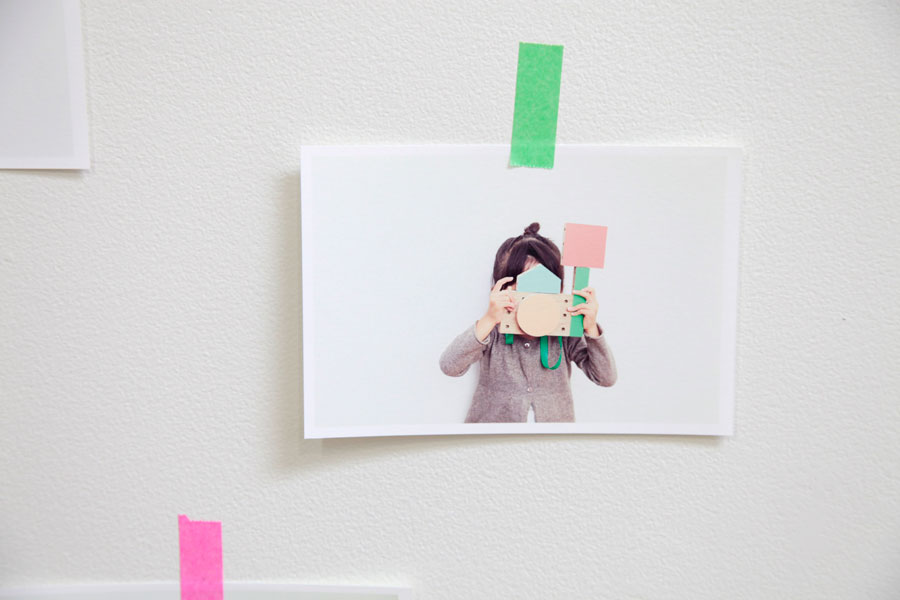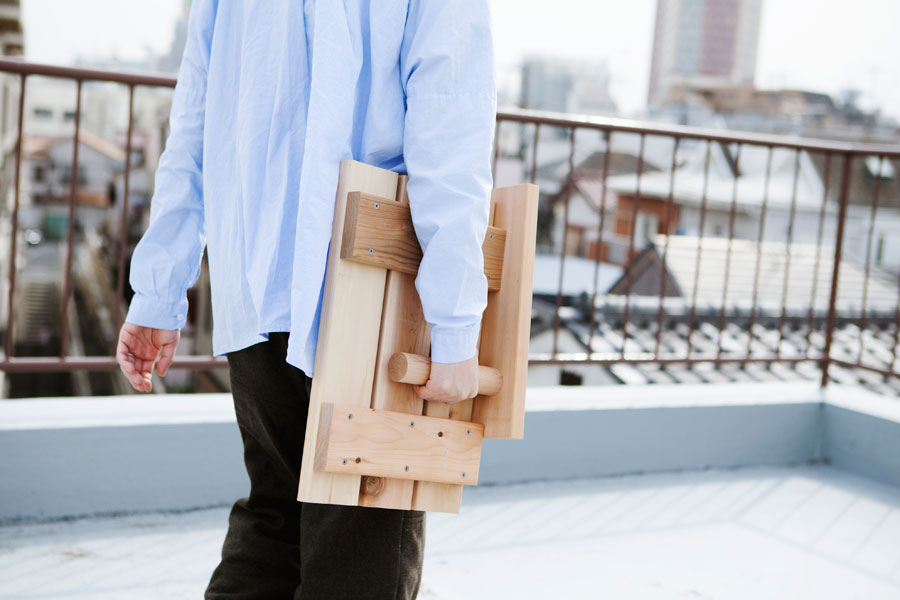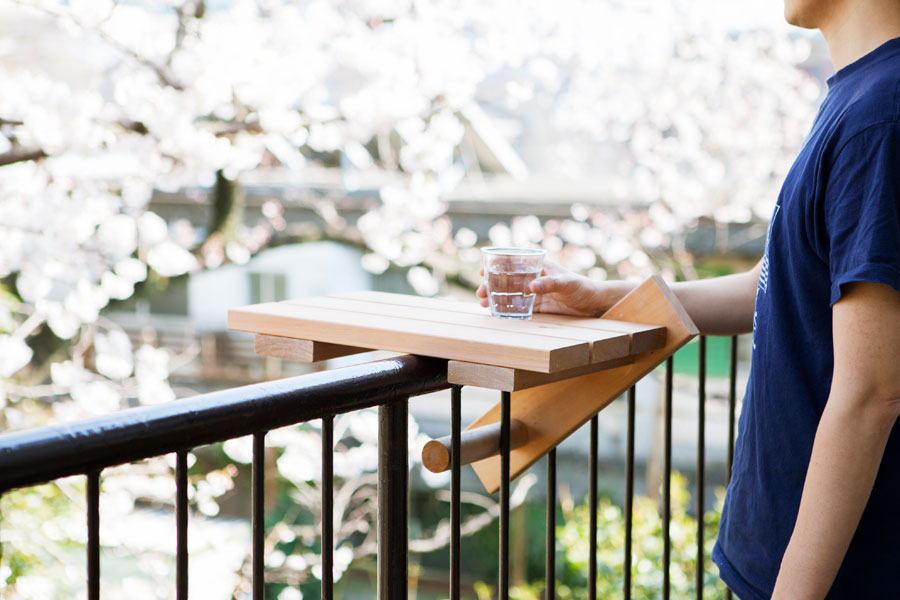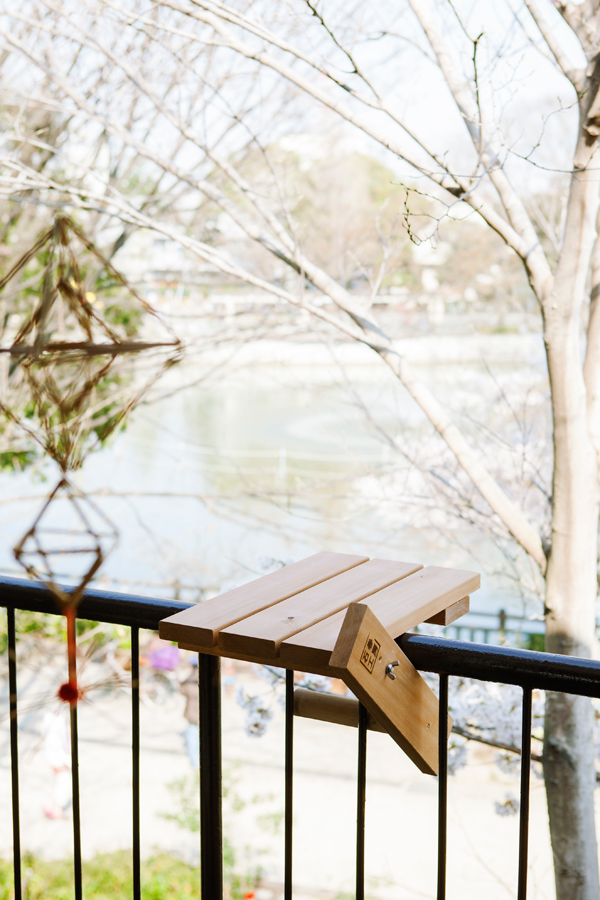TORAFU ARCHITECTS x Mr Kitly
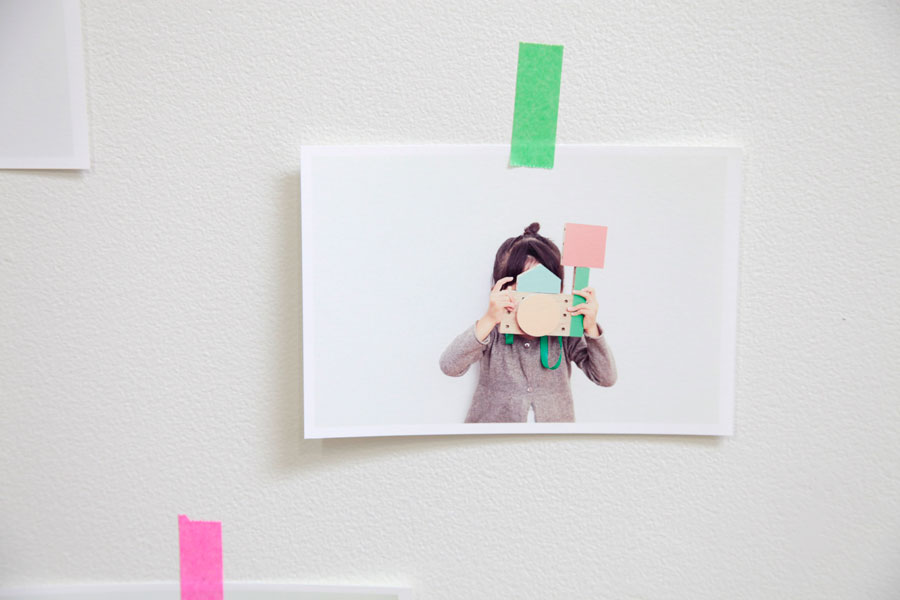
At the core of Pollinate (our new extra) is the notion that the meeting of minds can generate “cross-pollinated” ideas while also providing insight into diverse creative processes. When we heard that TORAFU ARCHITECTS would be exhibiting at Mr Kitly, we got a bit “swoony”. Here was our first pairing, a chance for a significant Japanese practice and a Japan-obsessed design purveyor to converse.
TORAFU is an architectural studio that balances design constraints with curiosity and playfulness, as evident across its projects small and large. From the whimsical yet practical design of everyday objects to commercial interiors or residential projects, TORAFU is unique (we’ve previously featured their remarkable concrete House in Kohoku). Based in Tokyo, TORAFU is headed up by directors Koichi Suzuno and Shinya Kamuro whose partnership formed organically through project work, including Claska hotel’s Template, the paper-light Airvase, interior architecture and design for companies like Freitag and Aesop.
Koichi Suzuno was in Melbourne in February as the TORAFU representative, for an exhibition at Mr Kitly, a shop and gallery of design, homewares and books that collects the delicate sensibility and aesthetic of owner Bree Claffey. As Bree notes, Mr Kitly is “my life on sale in many ways and it’s a bit uncompromising in that regard. It’s the stuff that I love rather than stuff that’s going to sell like hotcakes. I have this because I love it.” Having lived in the Kansai region of Japan, Bree’s beautifully edited range of objects look outwards – referencing her time there – but also inwards towards the personal and intimate. Mr Kitly is the three dimensional extension of Bree’s cult blog ii-ne-kore and represents a kind of homely creative hub where retail objects and exhibitions sit together in dialogue.
The TORAFU exhibition at Mr Kitly came about through a chance visit to the store by Koichi’s wife Melinda. Koichi was no stranger to the antipodes however, having spent a year working with Kerstin Thompson architects in Melbourne, and also regularly visiting Australia due to family and project work. Our discussion took place during a break in exhibition install. Present were Bree Claffey (owner, Mr Kitly), Koichi Suzuno (co-director, TORAFU architects), his wife Melinda and two daughters, and Eugenia Lim (editor, Assemble Papers). What follows below is an edited version of the wide-ranging, Japanese-English conversation.

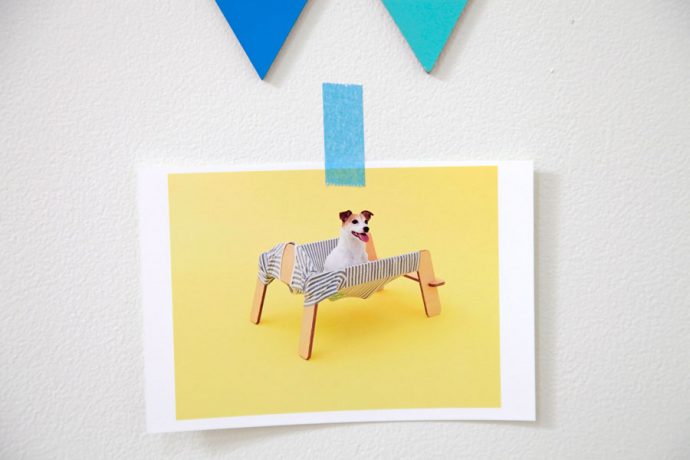
Context and cultural difference
Bree: (To Koichi) You were talking about how, when in a new country, you love to look at domestic living spaces. That for me is something that I do when visiting Japan. It’s about going down back streets to see small domestic arrangements that are very inspiring, very different…
Koichi: My feeling about Australia is it’s a bit like “the opposite”, for example, the seasons are reversed; summer is winter, autumn is spring. When I came to Australia, I noticed that lots of Japanese and Australians were mixing, lots of other nationalities. There’s also a real interest in Japanese culture. I had always wanted to be more free thinking…I grew up with Japanese customs and through a Japanese education system and I can easily put my thoughts into action, but from an Australian point of view, this can be seen as such a strange way of thinking. I also lived in Australia for one year, working with Kerstin Thompson architects and so wasn’t just a traveller here. Luckily, I can speak a little bit of English so I don’t experience that ‘outsider feeling’, however my wife Melinda, even though she can speak Japanese, in Japan she can be still viewed as a foreigner – like a gaigoku-jin.
B: That’s something I can understand. I think it probably applies to anyone leaving their home, going somewhere different and looking back. Maybe there’s something special about Japan because it does have quite a few rules and quite a tight culture. I think it is a bit different as an Australian. You don’t tend to reflect on your own culture as much, or there’s not as many surprises maybe…if you know what I mean? But it is interesting the gaigoku-jin feeling in Japan never goes.
Eugenia: (to Bree) Did you ever feel like Japan was home when you lived there?
B: Absolutely. The day-to-day life felt like home. Getting on my bike and riding through the back streets of Kyoto and knowing the neighbourhoods was home and it was just so beautiful and perfect for that time in my life. And because I was young…Koichi I’m not sure how old you were when you lived in Melbourne?
K: About 28.
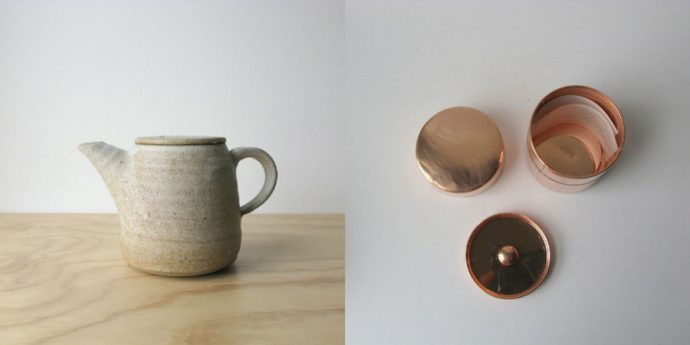
B: Yeah I was quite young, 20-21 in Japan, and reflecting back I think in that time I was a bit like a sponge. Just collecting the precious moments. It had a big impact on my sensibility and my aesthetics at that time. It really just crystalised what I find beautiful. That was very special. The kind of non-design object in Japan is just so beautiful and available.
Koloro at Mr Kitly and the start of TORAFU
K: When I came to Melbourne one holiday in 2011, I would always make my way to Mr Kitly. So the initial thinking behind the exhibition started about one year ago.
B: It was interesting from our point of view because you were so busy in Paris at the time. How involved is your partner Shinya Kamuro with the ideas and design for this show, or was it more driven by you?
K: It was my hope to have an exhibiton at Mr Kitly.
E: When did you decide to become TORAFU as a team together?
K: In 2004, I was asked to design a room for the hotel Claska. I then asked Kamuro who was my friend to help me with the project. From there we began working together and formed TORAFU. In the Claska hotel room we had to accommodate the Sony robot pet AIBO, and we had three days to name our office. TO-RA-FU is just a ‘sound’. Architectural offices can be so serious and have a ‘difficult’ feeling, so TO-RA-FU is just a soft sound. I also didn’t want something with a meaning because sometimes meanings are not soft – I just wanted a group of sounds – soft sounds…
B: It is a very soft sound…
K: Like tofu…so soft
Inverted approach and starting with the “site”
TORAFU’s first project was for Claska, a design hotel in Meguro, Tokyo.
K: Our Template room in Claska was really our first project and luckily it appeared in many magazines and online. So we just started working…and after Template, we got to work on the design of the hotel rooftop and step by step we started. This was also our first interior project. Because I was a graduate architect and I previously worked in a large architectural office, I had to shift my thinking to interior design. I don’t see a difference between architecture and interiors however, and I think of everything as a ‘site’, a starting point. Template was such a small room, so my initial thinking was from a product perspective… thinking about the little objects, and items like a TV, freezer, dryer, all needed for a hotel room.
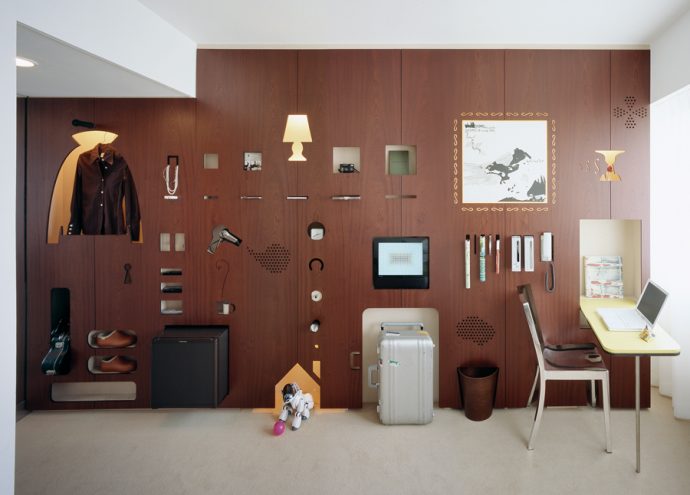
Normally my approach would be different, architecture first, interiors and then product with people last. In this case it was the reverse because it was such a small room and the products in my mind were so important for the concept. Architecture not always being on top – it is more equal this way and maybe more flexible…
B: Do you still think that way?
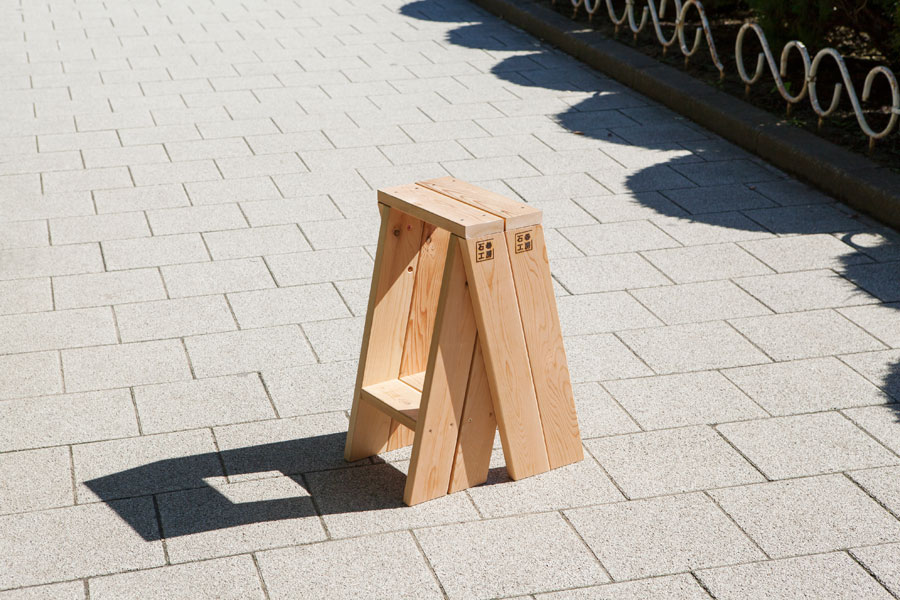

K: Architecture, interiors and product work together and in my mind are all a graduation from the same thinking. Normally, with Japanese ‘famous architecture’, once the work is finished, the architect removes all products and signs of life and then takes photos of the project – whereas I like to see all the products, the way of living…
B: This is a very different approach isn’t it?
K: This is my usual way of thinking, which I find more interesting. You know with architectural projects, the architect needs to design everything and sometimes even placing the furniture into a space, but I like different layers.
B: Architecture and products are so far apart – a house is about large ideas isn’t it? Beginning with the space and to bring it back down, beginning at that domestic level is a big difference…
K: When designing furniture I also want to give ‘the site’, for example the Skydeck product has a ‘site’ – a balcony is the only place where you can use it. I place these conditions onto each product because sometimes, the end product can be too open. Sometimes however one concept, one idea can solve and work perfectly with imposed condition
B: One big long table which starts off as furniture and becomes almost architecture with space underneath that people can use….This crossover between furniture and architecture is very interesting, the synthesis is nice. I love TORAFU products, but the ones that are so simple with a direct use really inspire.
From inspiration to documentation
From soft-textured studio names to portable balcony bars, the conversation flows to inspirations.
K: I try to read lots of comics. I love Yokoyama Yuichi, who’s a graphic artist and I even used his comic character for a shop. It was a Japanese shop in San Francisco called New People Centre – which is very connected to manga so I used his characters for the furniture.

K: Oh yes, by chance I got to meet him. He then told me about his Japanese manga exhibition and I was lucky enough to design the exhibition space for him.
K: I went to his house and he records all the conversations with his friends… always.
M: All the time on tapes…
B: What does he do with it?
K: When he is drawing and painting he listens to it like a radio to relive the interesting feelings again and again. I love his work, it’s so good!
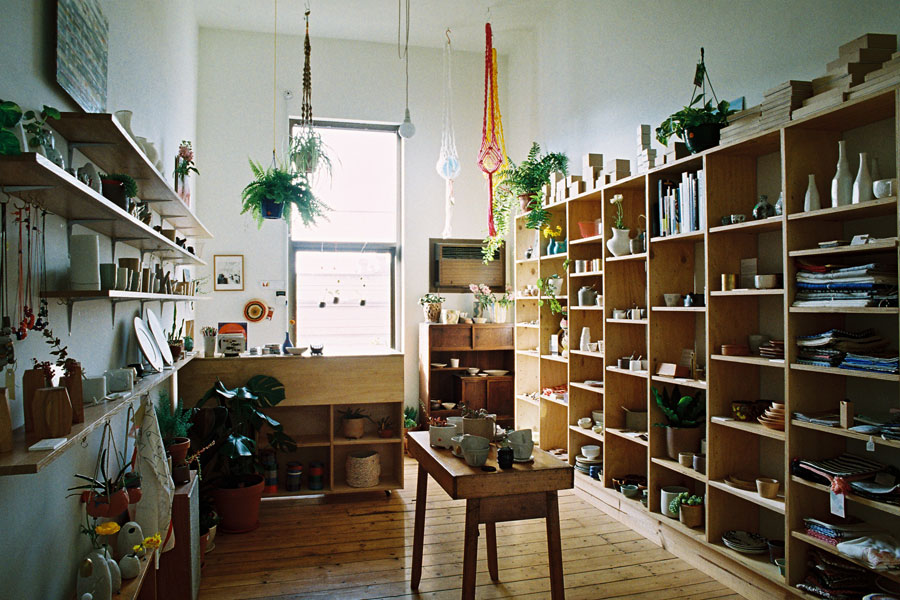

B: Are documents important for your work? Like our gallery, we have lots of shows and we try to document them but sometimes can’t…there’s one continual presence and then we move onto the next show…I wish that I documented more because there’s been so much amazing work shown.

K: For me architecture projects have such a long span…even buildings in Tokyo have been demolished and rebuilt so many times even I can’t remember what kind of building was there previously….for me people and memories are important.
So I use my camera to document all my projects, placing photos on our website…photos and also our book are important to show I think. I cannot show architecture that I’m designing because a house project can be yearlong. For these projects I need to ask the client if I can enter because I’m still largely a stranger. I think this is important because architecture I cannot carry…products like my airvase I can carry.
E: You can’t carry a building.
K: Yeah, I cannot carry a building (laughter).
Many thanks to Minaho Sakane and the team at TORAFU ARCHITECTS for their cross-country, bilingual support in making this interview a reality. Thank you to Koichi Suzuno and Bree Claffey for taking the time to share tea and conversation in what was a busy time preparing for the Koloro exhibition. A huge thanks to Leon Goh for his creative contribution, words and making this happen in the first place.
